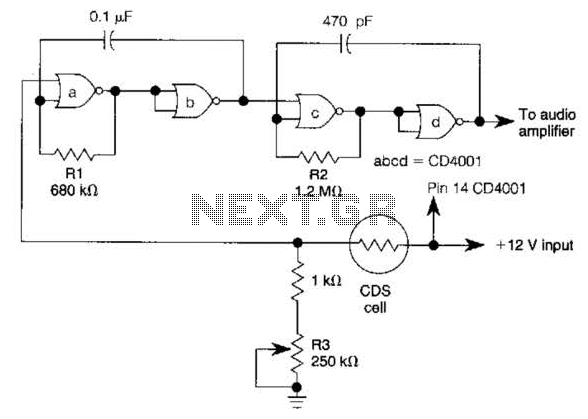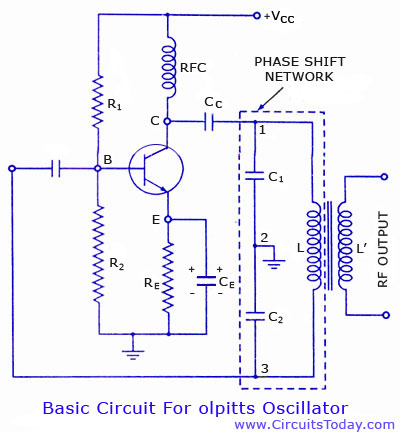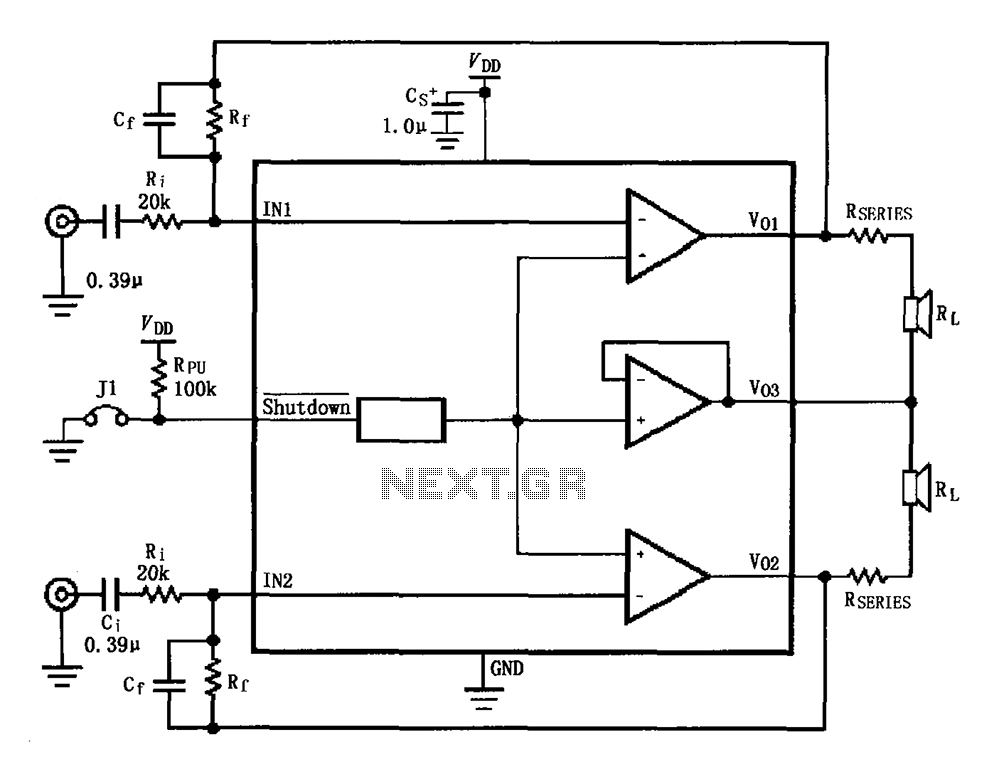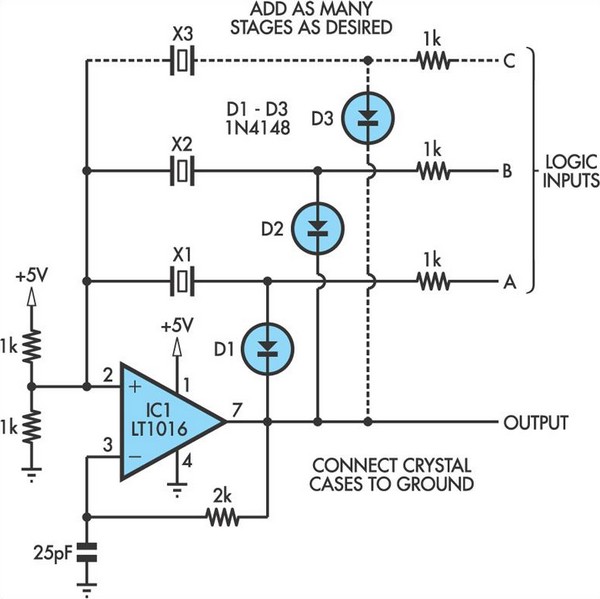
Bruces TPU Theory and Experiments
Warning: Undefined array key "extension" in /var/www/html/nextgr/view-circuit.php on line 468
Deprecated: strtolower(): Passing null to parameter #1 ($string) of type string is deprecated in /var/www/html/nextgr/view-circuit.php on line 468
SM indicates that the tube can produce certain frequencies and discusses the use of TV tubes to achieve improved sound quality at higher frequencies. The effectiveness of this approach can only be determined through experimentation with the specified frequency ranges. The next step involves tuning the amplifier to the TPU (Tesla Power Unit). After tuning the TPU according to previously outlined steps, it is essential to measure its impedance. The amplifier selected must match this impedance to avoid distortion, which can hinder performance and prevent the desired catalyst effect. A tube circuit is being utilized, and its design was paused to analyze new information provided by Turbo. Impedance, defined as a derived unit of resistance, capacitance, and inductance, is measured in Ohms but can be complex and sometimes misleading. For instance, a speaker's impedance may be rated at 8 Ohms but can vary with frequency. The tube circuit aims to match the amplifier impedance to the tuned TPU and a specific frequency of 35.705 kHz. The signal from the amplifier to the speaker travels at the speed of light, highlighting the importance of speed as a form of energy. Amplification refers to increasing signal strength, with voltage amplification characterized by the gain ratio of output to input voltage. For example, a 10mV input could be amplified to 1 Volt, indicating a voltage gain of 100. Current amplification follows a similar principle, where a 10mA input could be increased to 1A, also representing a gain of 100. Feedback is crucial for frequency control in solid-state devices, but it can pose challenges for generators. It involves routing a portion of the output signal back to the input, which is essential for achieving high performance in many amplifier types.
The circuit design focuses on achieving optimal performance through precise impedance matching between the TPU and the amplifier. This is critical to ensure that the system operates without distortion, which could compromise the overall sound quality and effectiveness of the circuit. The process begins with tuning the TPU, which must be done carefully according to established guidelines. Once tuned, measuring the TPU's impedance provides the necessary data to select an appropriate amplifier. The amplifier must have an impedance rating that aligns with the TPU to maintain signal integrity.
In the context of tube amplifiers, the design should emphasize the characteristics of the tube used, as it can significantly influence the sound quality and frequency response. The use of TV tubes, known for their ability to handle higher frequencies, can enhance the overall audio experience. The circuit should include provisions for adjusting various parameters, including gain and feedback levels, to tailor the performance to specific audio applications.
The amplification process must be understood in terms of both voltage and current. The voltage gain is a critical measure, as it determines how much the input signal is increased. The design should incorporate feedback mechanisms to maintain stability and control over the amplification process, while also considering the potential drawbacks of excessive feedback, which can introduce noise and reduce clarity in audio applications.
Overall, the schematic should reflect a comprehensive understanding of impedance, amplification, and feedback principles, ensuring that the circuit operates efficiently and effectively while delivering high-quality audio performance. The integration of these elements will result in a robust design capable of meeting the demands of modern audio applications.SM is merely pointing out that the tube is capable of producing those frequencies. he talks about using TV tubes to get a better sound at higher frequencies. anyways it doesnt matter what we think he is saying. just experiment it and see if u get anything from those pointed ranges. it is the only way to be certain. Okay, the next tuning is that of the amplifier to the TPU. Once your TPU is tuned according to the steps mentioned a few posts previous, you need to measure the impedance. This then is the impedance that your choice of amplifier must also be. IF THE amplifier impedance does not match that of the TPU there can be DISTORTION. And we all know by now what that means. NO CATALYST! Now as you know, I will be using a tube circuit. It was in the middle of being designed when Turbo released his wonderful compilation of additional material. I put a halt to the circuit until I could analyze all of the new material. "A derived unit of resistance, capacitance and inductance in combination is called impedance, although it is not a requirement that all three be included.
Impedance is also measured in Ohms, but is a very complex figure, and often fails completely to give you any useful information. The impedance of a speaker is a case in point. Although the brochure may state that a speaker has an impedance of 8 Ohms, in reality it will vary depending on frequency" I am glad that "I am not in a hurry"!
LOL For now my Tube guy will match the impedance of the amp to my "tuned" tpu AND to the correct frequency of 35. 705 KHz For those who do not yet understand the collectors can restudy SM`s clue of the engineering of the plane that broke the sound barrier, or reread my thread on the matter.
I also found out that the "signal" from the Amp to the speaker travels at the speed of light. Some of you will understand the significance of that! SPEED is energy! The term "amplify" basically means to make stronger. The strength of a signal (in terms of voltage) is referred to as amplitude, but there is no equivalent for current (curritude, nah, sounds silly). This in itself is confusing, because although "amplitude" refers to voltage, it contains the word "amp", as in ampere.
Maybe we should introduce "voltitude" - No Just live with it. In the case of a voltage amplifier, a small input voltage will be increased, so that for example a 10mV (0. 01V) input signal might be amplified so that the output is 1 Volt. This represents a "gain" of 100 - the output voltage is 100 times as great as the input voltage. This is called the voltage gain of the amplifier. In the case of a current amplifier, an input current of 10mA (0. 01A) might be amplified to give an output of 1A. Again, this is a gain of 100, and is the current gain of the amplifier. "# 3. As you know, Large amounts of FEEDBACK is essential to frequency and control when using SS devices for everything in the electronics world, HOWEVER, it is the enemy of generators!" Feedback is a term that creates more and bloodier battles between audio enthusiasts than almost any other.
Without it, we would not have the levels of performance we enjoy today, and many amplifier types would be unlistenable without it. Feedback in its broadest sense means that a certain amount of the output signal is "fed back" into the input.
An amplifier - or an element of an amplifying device - is presented with the input signal, and compares it to a "small scale replica 🔗 External reference
The circuit design focuses on achieving optimal performance through precise impedance matching between the TPU and the amplifier. This is critical to ensure that the system operates without distortion, which could compromise the overall sound quality and effectiveness of the circuit. The process begins with tuning the TPU, which must be done carefully according to established guidelines. Once tuned, measuring the TPU's impedance provides the necessary data to select an appropriate amplifier. The amplifier must have an impedance rating that aligns with the TPU to maintain signal integrity.
In the context of tube amplifiers, the design should emphasize the characteristics of the tube used, as it can significantly influence the sound quality and frequency response. The use of TV tubes, known for their ability to handle higher frequencies, can enhance the overall audio experience. The circuit should include provisions for adjusting various parameters, including gain and feedback levels, to tailor the performance to specific audio applications.
The amplification process must be understood in terms of both voltage and current. The voltage gain is a critical measure, as it determines how much the input signal is increased. The design should incorporate feedback mechanisms to maintain stability and control over the amplification process, while also considering the potential drawbacks of excessive feedback, which can introduce noise and reduce clarity in audio applications.
Overall, the schematic should reflect a comprehensive understanding of impedance, amplification, and feedback principles, ensuring that the circuit operates efficiently and effectively while delivering high-quality audio performance. The integration of these elements will result in a robust design capable of meeting the demands of modern audio applications.SM is merely pointing out that the tube is capable of producing those frequencies. he talks about using TV tubes to get a better sound at higher frequencies. anyways it doesnt matter what we think he is saying. just experiment it and see if u get anything from those pointed ranges. it is the only way to be certain. Okay, the next tuning is that of the amplifier to the TPU. Once your TPU is tuned according to the steps mentioned a few posts previous, you need to measure the impedance. This then is the impedance that your choice of amplifier must also be. IF THE amplifier impedance does not match that of the TPU there can be DISTORTION. And we all know by now what that means. NO CATALYST! Now as you know, I will be using a tube circuit. It was in the middle of being designed when Turbo released his wonderful compilation of additional material. I put a halt to the circuit until I could analyze all of the new material. "A derived unit of resistance, capacitance and inductance in combination is called impedance, although it is not a requirement that all three be included.
Impedance is also measured in Ohms, but is a very complex figure, and often fails completely to give you any useful information. The impedance of a speaker is a case in point. Although the brochure may state that a speaker has an impedance of 8 Ohms, in reality it will vary depending on frequency" I am glad that "I am not in a hurry"!
LOL For now my Tube guy will match the impedance of the amp to my "tuned" tpu AND to the correct frequency of 35. 705 KHz For those who do not yet understand the collectors can restudy SM`s clue of the engineering of the plane that broke the sound barrier, or reread my thread on the matter.
I also found out that the "signal" from the Amp to the speaker travels at the speed of light. Some of you will understand the significance of that! SPEED is energy! The term "amplify" basically means to make stronger. The strength of a signal (in terms of voltage) is referred to as amplitude, but there is no equivalent for current (curritude, nah, sounds silly). This in itself is confusing, because although "amplitude" refers to voltage, it contains the word "amp", as in ampere.
Maybe we should introduce "voltitude" - No Just live with it. In the case of a voltage amplifier, a small input voltage will be increased, so that for example a 10mV (0. 01V) input signal might be amplified so that the output is 1 Volt. This represents a "gain" of 100 - the output voltage is 100 times as great as the input voltage. This is called the voltage gain of the amplifier. In the case of a current amplifier, an input current of 10mA (0. 01A) might be amplified to give an output of 1A. Again, this is a gain of 100, and is the current gain of the amplifier. "# 3. As you know, Large amounts of FEEDBACK is essential to frequency and control when using SS devices for everything in the electronics world, HOWEVER, it is the enemy of generators!" Feedback is a term that creates more and bloodier battles between audio enthusiasts than almost any other.
Without it, we would not have the levels of performance we enjoy today, and many amplifier types would be unlistenable without it. Feedback in its broadest sense means that a certain amount of the output signal is "fed back" into the input.
An amplifier - or an element of an amplifying device - is presented with the input signal, and compares it to a "small scale replica 🔗 External reference





